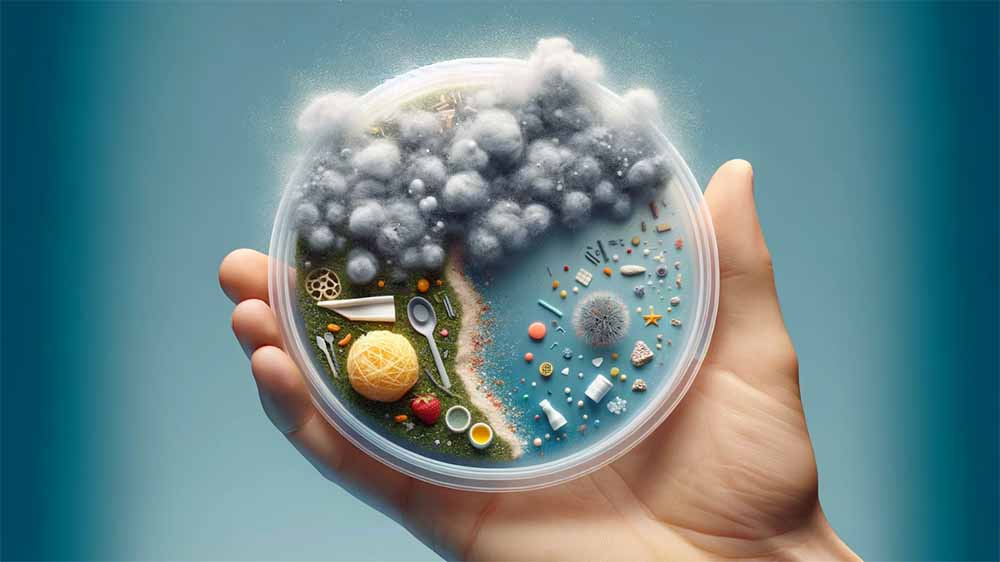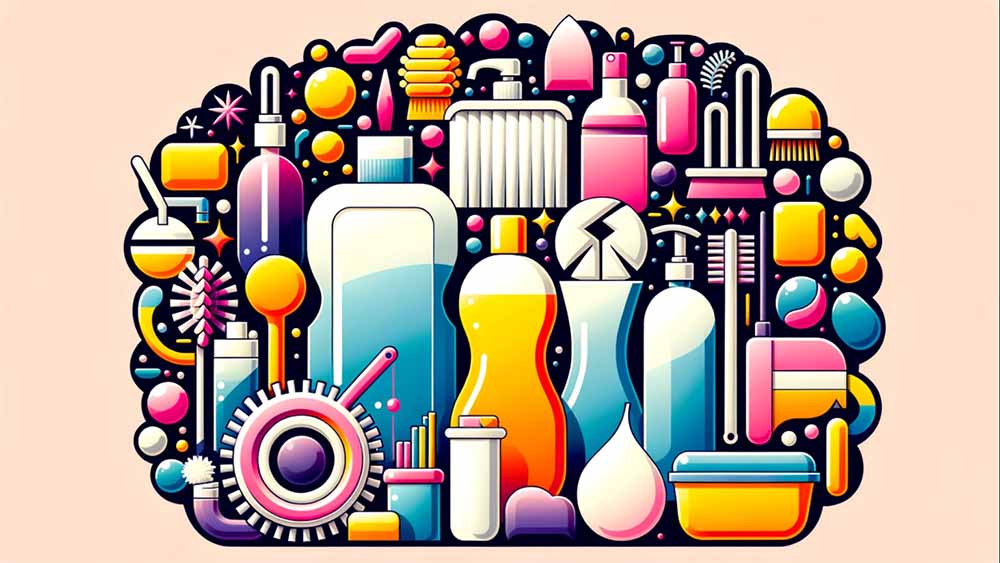
- Microplastics are tiny plastic particles, often less than 5 millimeters, sneaking into many products, including sex toys.
- Luckily, the sex toy universe offers some stellar alternatives that are as safe as they are exciting. Silicone toys are like the knights in shining armor – non-porous, easy to clean, and free from chemical nasties. Then there’s glass and metal, the non-porous, chic options for those who like a bit of elegance and safety in their escapades.
- And don’t forget the condom trick – it’s like a mini superhero cape for your toy, shielding you from potential microplastic villains lurking within.
What Are Microplastics?
Microplastics are tiny plastic particles known for their reluctance to biodegrade. They are accumulating in our environment at an alarming rate sneaking into an array of products, including unexpected places like sex toys. There are two main types: primary microplastics, which are intentionally added to products like cosmetics [1], and secondary microplastics, the remnants of larger plastic items breaking down. [2]
This is a bit of a worry for us humans. Aside from the obvious fact they hurt our beloved Mother Earth, these tiny particles can sneak into our bodies through the food we eat, the water we drink, or even the air we breathe. And once they’re in, they could bring some unsavory hitchhikers like toxic chemicals.
The long-term health effects are still a bit of a mystery box, but scientists are concerned they might mess with our body’s systems, potentially leading to health issues down the line. It’s a case of ‘small but mighty’ where the ‘mighty’ isn’t really working in our favor.
Scientific Studies About Microplastics in Sex Toys
In March 2023, a groundbreaking study published in Microplastics and Nanoplastics and later presented at the Society for Risk Analysis Annual Conference shed light on the environmental and health risks associated with sex toys. Led by Joana Sipe and Christine Hendren, the study used a risk analysis approach to reveal that the abrasion of sex toys during use contributes to microplastic release, posing significant health hazards as these particles can absorb and release toxic substances.
The team tested four different product categories: anal toys, beads, dual vibrators, and external vibrators made from a variety of materials. Surprisingly, anal toys released the most plastic particles (say what!), with external vibrators the least.
Some even claim that because of their mere existence in sex toys, they can even cause diabetes. Now this claim is spreading like wildfire in the sexual health industry. If you want to learn more about it, you can check out my article on the link.
What does this tell us? Well, it tells us it’s a good idea to be careful when selecting your product as some appear unsafe. To help you, I have listed some general advice below that you can apply for future purchases to ensure a safer experience.
Solution and Protection For Microplastics
1. Selecting The Right Material
In the grand quest to dodge those pesky microplastics, we have some practical advice you can follow. The world of sex toys offers a smorgasbord of options that are as safe as they are thrilling. Let’s dive into this treasure trove:
- Silicone: Silicone is like the superhero of sex toy materials. It’s sleek, non-porous (bacteria can’t crash the party), and a marvel to look at. Wave goodbye to harmful chemicals because high-quality, medical-grade silicone is here to save the day.
- Glass: Think Cinderella, but way more fun. Glass sex toys are the crystal clear choice for those shunning plastic. This is also ideal for those who enjoy a bit of temperature tango. They’re like the fine wine of sex toys – they just get better with age.
- Metal: For those who want their pleasure as sturdy as a knight’s armor, metal sex toys are your trusty steeds. Simple to sanitize, and like glass, it’s perfect for fans of temperature play. Opt for high-quality stainless steel or aluminum; you’re all set for an epic journey.
Aside from the fact that silicone, glass, and metal are way safer alternatives than PVC or plastic, they are all a breeze to clean. Now, if you are an avid sex toy consumer, you’re going to find that feature a game-changer. If you’re interested in learning the full ranking of the best material for sex toys, read this guide.
2. Using a Condom
I recommend slipping a condom over your sex toy, reducing your exposure to any unwelcome microplastics or chemicals that might be lurking. This method is especially handy when you’re unsure about the material or if it’s known to carry risks. A condom also makes cleanup easier: just remove the condom and give the toy a quick rinse with mild soap and warm water. That’s it!
Happy vibing!
Rachel
- 7 Wand Vibrator Sex Positions For Magical Orgasms! - May 15, 2024
- 8 Best Sex Positions For Women To Orgasm (With Illustrations) - May 14, 2024
- 7 Rough Sex Positions For Adventurous Couples - May 13, 2024

